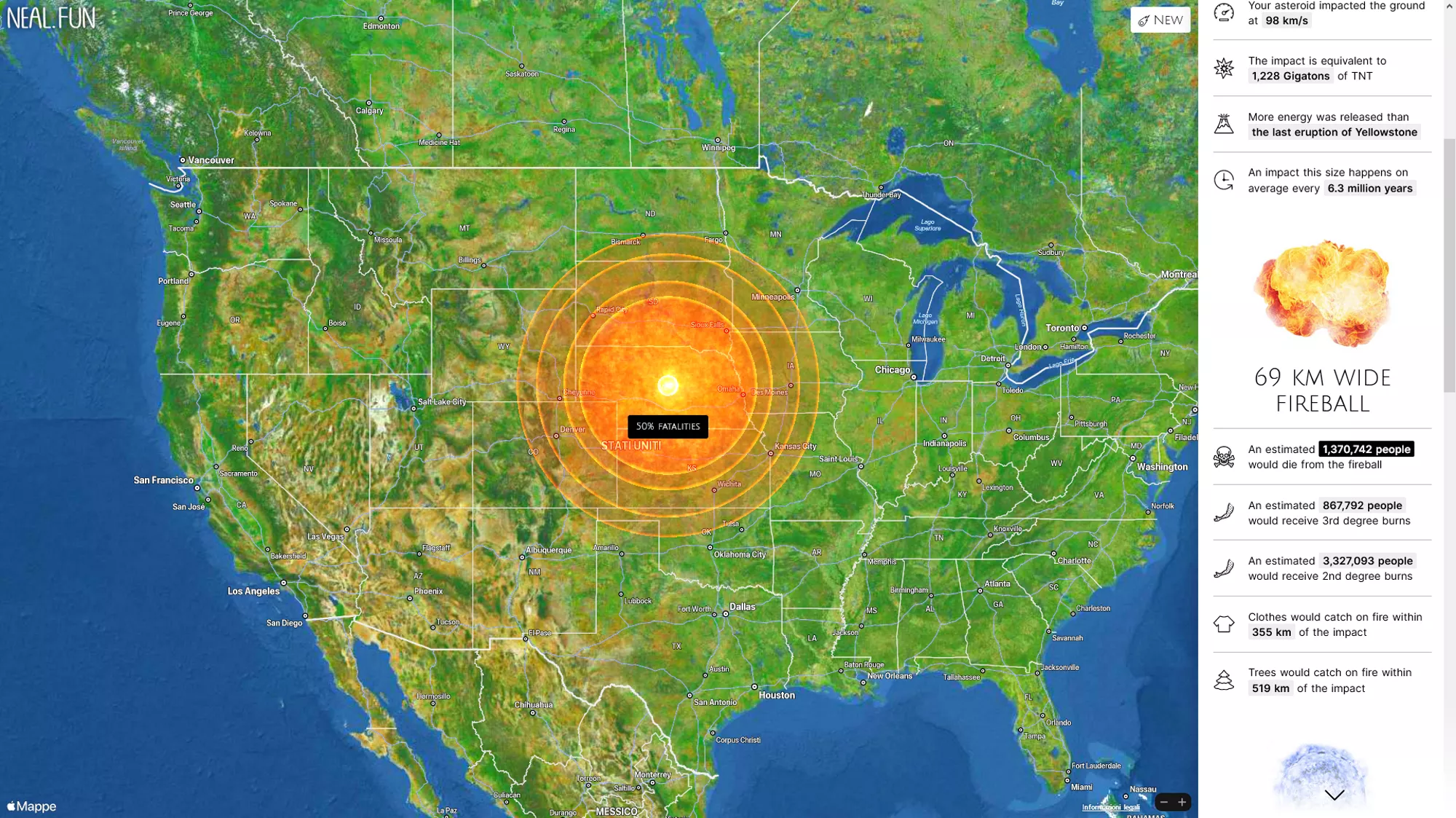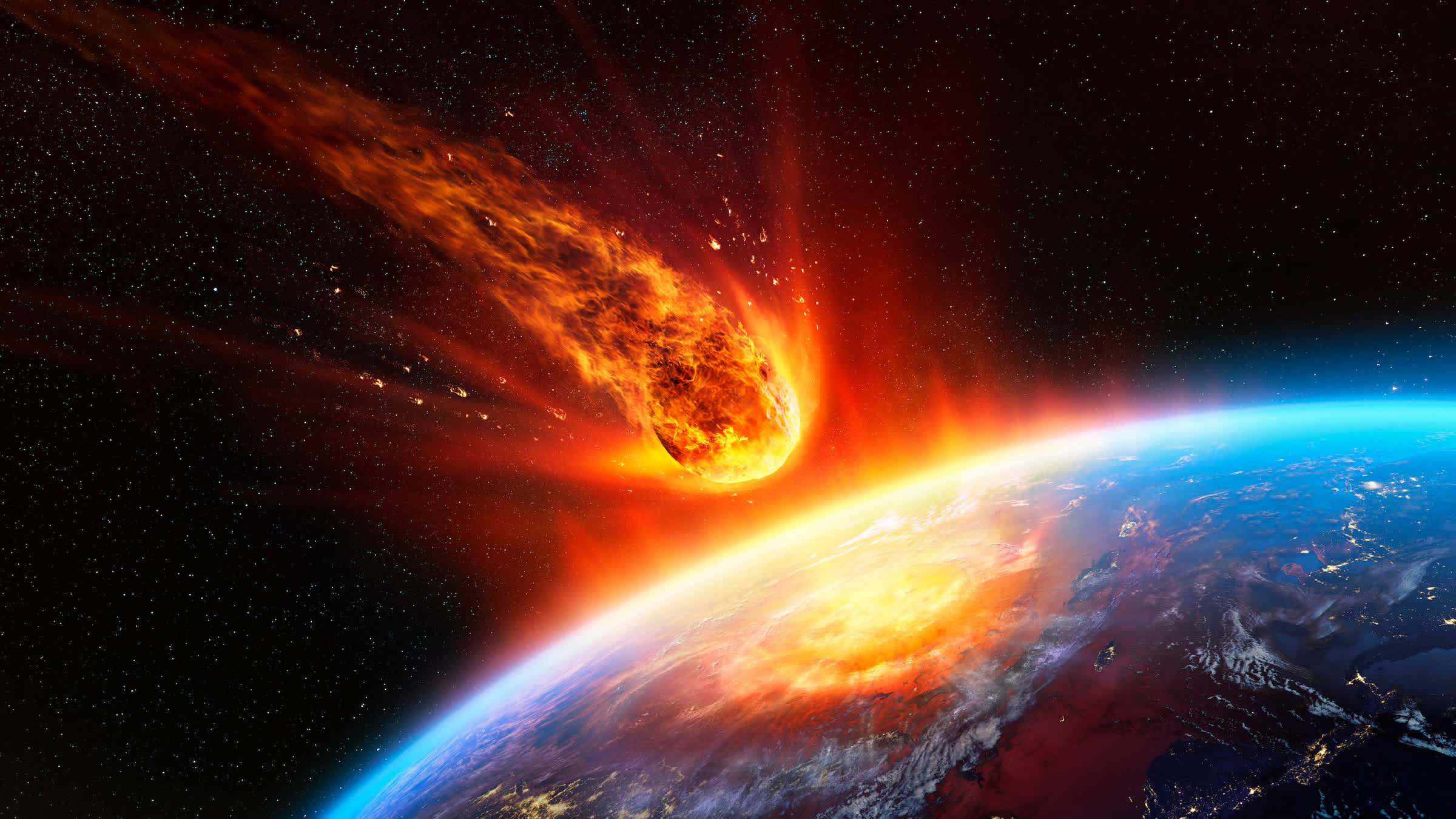In brief: "Planet killer" asteroids are an over-abused science fiction trope inspiring films, books and other entertainment products. Asteroid Launcher is a new web tool that can give you a rough idea about the level of destruction giant space rocks can bring to our tiny, fragile blue marble of a planet.
Thanks to films like Deep Impact, the not-so-funny Don't Look Up and countless other entertainment experiences, modern audiences are very much aware of the (theoretical) threat an asteroid impact could present for Earth. With Asteroid Launcher, theory can become a bit more practical by giving interesting tidbits of data about the extent of such an impact.
Programmed by Neal Agarwal, Asteroid Launcher simply does what it says. The website lets you simulate an asteroid impact everywhere on Earth and provides information about the resulting crater, the level of energy released in "Gigatons of TNT," the fireball dimension and more.
Maybe the most interesting (and morbid) data provided by Asteroid Launcher is the one about the actual effects of the impact on population and plants, with estimations of deaths by vaporization (within the initial, apocalyptic fireball unleashed in the first seconds), victims suffering brutally painful burns, clothes and trees catching fire, the ear-rupturing shockwave, wind blast, cataclysmic earthquakes and much, much more.
The disaster level depends on the asteroid composition, diameter, speed and impact angle, and this is where Asteroid Launcher seems to be lacking the most feature-wise. Wannabe gods of destruction can choose between comets, gold, iron, stone, and carbon asteroids, a 1-100 km/s speed, and a diameter up to 1.5 kilometers.

For example, dropped a 1.5 km-wide comet in the center of the US would create a 31 km-wide crater and instantly vaporize an estimated 327 people.
The energy released would be equivalent to 1,228 Gigatons of TNT, ie more energy than the last eruption of the Yellowstone supervolcano. The fireball alone would kill 1.3 million people in a few instants, while many more millions would suffer horrible burns. A 249-decibel shockwave would damage lungs and rupture eardrums for hundreds of kilometers, buildings would collapse and an 8.5 magnitude earthquake would kill more than 2,500 additional people.
In short: Nebraska and part of the Midwestern would become a wasteland, but the country as a whole would survive to see another dawn. Right now, Asteroid Launcher is in fact unable to simulate a real "planet killer" asteroid like the ones Hollywood loves so much, or even a more "modest" impact like Chicxulub's - the 11-12 km wide asteroid that killed the dinosaurs 65 million years ago.
To completely wipe out life on Earth, scientists estimate an asteroid (or a comet, or even a planetoid) would have to be about 96 km wide. An unthinkable perspective that goes way beyond the scope of Asteroid Launcher's simulation - and maybe it's for the best.
